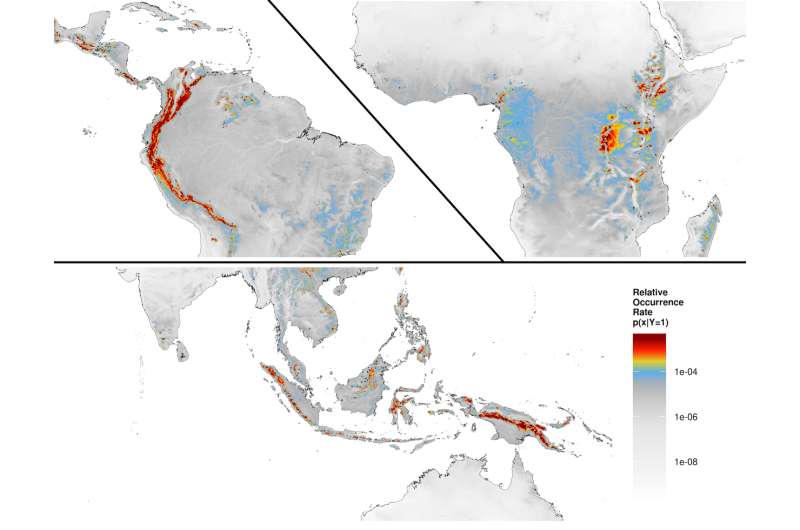Earth's biodiversity is changing as the planet warms. But how?

As the Earth's climate changes, shifting weather patterns will affect where plants and animals can live.
Some species—such as polar bears, frogs and even bumblebees—may see habitats shrink. Others may be forced to relocate to new environs.
To help us understand the massive changes underway, University at Buffalo ecologist Adam Wilson is helping develop a new tool for visualizing how plant and animal populations worldwide are responding to fluctuations in climate.
Wilson, PhD, an assistant professor of geography in the UB College of Arts and Sciences, is working with the Map of Life, an online resource led by Yale University and the University of Florida. Currently, the platform enables everyone from schoolchildren to researchers to see where different species are located in the world—where plants and animals have been observed on every continent, and how far their habitats extend.
The Map of Life team wants to expand the system to include environmental and climatic data, so that users can visualize and analyze links between climate and habitat change on the level of individual species.
Wilson is playing a key role in this project: He is developing models that will enable the Map of Life team to integrate weather observations such as rainfall, temperature and cloud cover patterns into the platform, making this data mappable and searchable.
It's a challenge because climate observations have what researchers call different spatial and temporal resolutions: air temperature may be recorded hourly but monitored only in populated areas, while cloudiness may be recorded twice daily but monitored all over the world, including in regions where few humans live. Fusing this patchwork of data into one system that the Map of Life can understand is tricky.
But when it's done, scientists will have a new tool for understanding how climate change is affecting biodiversity.
"Right now, the Map of Life can tell us where plants and animals are, but not why they are there," Wilson says. "What we want to do is to broaden the Map of Life to explain these patterns, so that we can see how climate is influencing where different species are found."
Provided by University at Buffalo





















